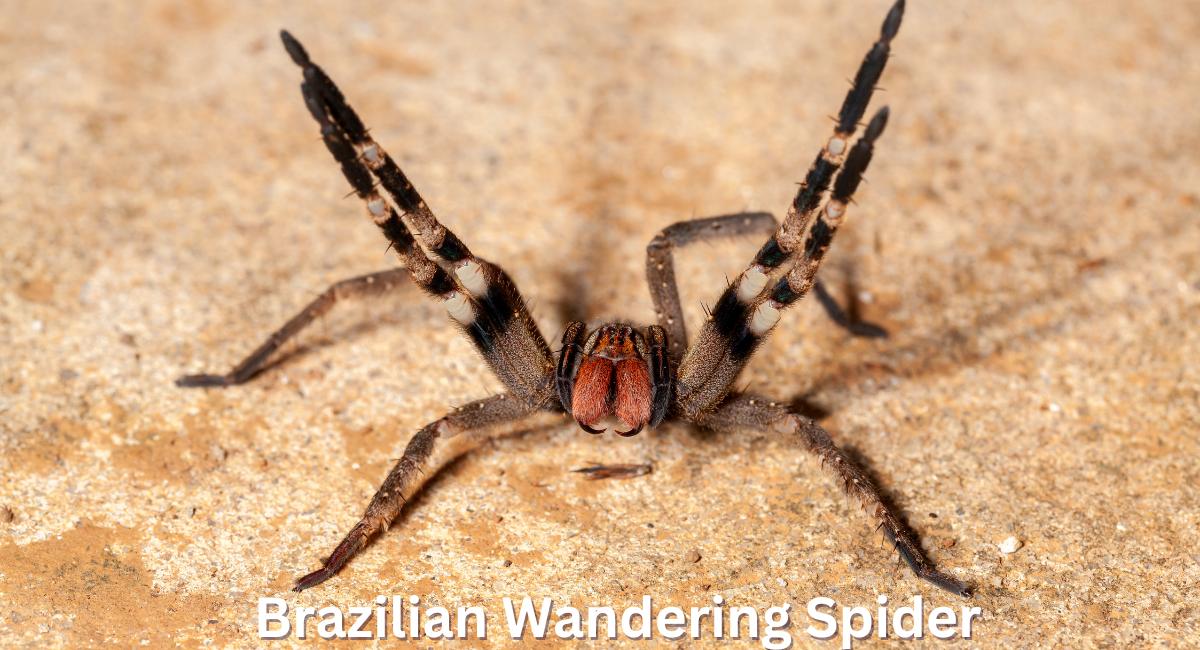The Brazilian Wandering Spider, scientifically known as Phoneutria, is a fascinating yet notorious arachnid. It has captured the attention of both scientists and the public. Found mainly in Central and South America, this spider is infamous for its potent venom and aggressive nature. It is often regarded as one of the deadliest spiders in the world.
These spiders are large, with long legs and a distinctive coloration that ranges from brown to gray. Unlike many other spiders, they do not construct webs. Instead, they actively hunt and wander, allowing them to thrive in various environments, including tropical forests and urban areas. Beyond their striking appearance, Brazilian Wandering Spiders play a crucial role in their ecosystem. They help control insect populations, making them important predators. Their venom is not just a tool for subduing prey but also a subject of scientific research. Studies explore its potential for medical applications.
Despite their fearsome reputation, bites to humans are rare. Fatalities are even less common when medical treatment is administered promptly. Understanding their ecological importance and behavior is essential. It promotes coexistence and appreciation for these remarkable arachnids. While dangerous, they contribute to the balance of their natural habitats.
Characteristics and Identification
The Brazilian Wandering Spider stands out in the arachnid world due to its striking appearance and impressive size. Adult spiders can reach up to 5 inches in leg span, with males often larger than females. Their coloration varies from brown to gray, with distinctive red or orange markings on the underside of their abdomen. Long, hairy legs add to their imposing presence, making them one of the most recognizable spiders in their native habitats.
Despite their fearsome reputation, Brazilian Wandering Spiders play a crucial role in controlling insect populations. This makes them essential to the ecosystem. In discussions about dangerous wildlife, this spider often ranks alongside the deadliest snakes due to its potent venom and aggressive behavior. While both can deliver dangerous bites, understanding their ecological roles helps reduce fear. The spider’s venom is not just a defense mechanism. It also subdues prey, reinforcing its role as an apex predator.
From the Brazilian Wandering Spider to the deadliest snakes, awareness of these creatures highlights their importance. Respecting their habitats helps maintain the balance of nature.
Habitat and Distribution
Behavior and Feeding Habits
Venom and Medical Significance
While both spiders possess potent venom, their behaviors and habitats differ significantly. Understanding these differences is essential for managing encounters with these spiders and addressing the potential health risks they pose. Research into the venom of both the Brazilian Wandering Spider and the Brown Recluse Spider is crucial for developing effective treatments and fostering a greater awareness of these fascinating yet dangerous arachnids.
Myths and Misconceptions
The Brazilian Wandering Spider is known as one of the deadliest spiders in the world, leading to many myths and misconceptions. While its venom is highly potent, fatal bites are rare, especially with quick medical attention. Understanding these misconceptions helps foster a balanced view and reduces unnecessary fear. Many believe this spider is naturally aggressive, but it usually avoids humans. It only bites when it feels threatened or cornered.
Education and awareness are key to demystifying the Brazilian Wandering Spider. Instead of fearing it, people should recognize its ecological role. These spiders help control insect populations, making them essential to the environment. Though classified as one of the deadliest spiders in the world, the actual risk to humans is low with proper knowledge. By understanding their behavior, people can manage encounters better and appreciate their unique traits.
Conservation Status
Currently, the Brazilian Wandering Spider is not classified as endangered; however, its population faces significant threats due to habitat destruction and climate change. Activities such as deforestation and urbanization lead to the loss of natural habitats, which can severely disrupt their populations. Conservation efforts aimed at protecting these environments are crucial not only for the Brazilian Wandering Spider but also for the overall health of ecosystems. By raising awareness about their ecological role, we can better appreciate the importance of these spiders in pest control, which ultimately supports agricultural practices and biodiversity.
Efforts to conserve the Brazilian Wandering Spider’s habitats must be a priority as climate change continues to alter ecosystems. Education plays a vital role in these initiatives, helping communities understand the value of spiders and promoting coexistence. Protecting the natural environments where these spiders thrive will not only benefit them but also contribute to the preservation of countless other species that share their habitat. By fostering a greater appreciation for the Brazilian Wandering Spider and its role in the ecosystem, we can inspire more effective conservation strategies and ensure the survival of this remarkable arachnid for future generations.
Coexistence with Humans
While Brazilian Wandering Spiders can be dangerous, promoting safe coexistence is essential. Keeping living spaces clean and clutter-free reduces encounters, as these spiders prefer dark, undisturbed areas. Awareness campaigns can educate people about their behavior and ecological role, helping to reduce fear. These spiders provide benefits like effective pest control, making them valuable to the environment. By understanding their role, communities can appreciate their presence rather than fear them.
Moreover, fostering an environment where both humans and the Brazilian Wandering Spider can thrive is crucial. Educational programs should emphasize the spider’s role in maintaining ecological balance and the importance of biodiversity. By highlighting their natural hunting abilities and contributions to the ecosystem, we can shift public perception from fear to respect. Ultimately, cultivating an understanding of the Brazilian Wandering Spider’s ecological significance can lead to healthier environments and a more harmonious relationship between humans and wildlife.
Research and Studies
The Brazilian Wandering Spider has garnered significant attention in the scientific community, particularly due to its unique biological traits and potent venom. Researchers are actively exploring the therapeutic applications of its venom, especially in the realm of pain management. The neurotoxins produced by this spider have shown potential in influencing human physiology</strong>, leading to innovative approaches in pharmacology and toxicology. As studies on the Brazilian Wandering Spider progress, they promise to unveil not only the intricacies of arachnid biology but also potential breakthroughs that could benefit medical science.
Moreover, ongoing research into the Brazilian Wandering Spider emphasizes the importance of understanding its venom’s composition and effects. By delving deeper into its biochemical properties, scientists aim to identify specific components that may be harnessed for therapeutic use. This line of inquiry is essential not only for developing new treatments but also for enhancing our overall knowledge of how venomous species interact with their environments and affect human health. Continued investment in research on the Brazilian Wandering Spider could lead to significant advancements in medical therapies and a greater appreciation for the ecological roles these spiders play.
Cultural Significance
In many cultures, spiders hold symbolic meanings, and the Brazilian Wandering Spider is no exception. This species has garnered a fearsome reputation, becoming a subject of folklore and mythology in regions where it is found, particularly in Central and South America. Stories often portray the Brazilian Wandering Spider as a formidable creature, which has led to both fascination and fear. Although many people view this spider with trepidation, they also admire its remarkable adaptations that help it thrive in diverse environments and its crucial role in controlling insect populations. Recognizing these aspects of the Brazilian Wandering Spider can help shift perspectives from fear to respect.
Acknowledging the cultural significance of the Brazilian Wandering Spider fosters a deeper appreciation for these creatures and highlights the importance of conservation efforts. In many communities, these spiders are seen as symbols of resilience and adaptability, representing the complex relationships within ecosystems.
Conclusion
The Brazilian Wandering Spider, with its remarkable characteristics and complex behavior, serves as a crucial component of its ecosystem. Understanding this species’ biology, conservation status, and role in pest control can help mitigate fear and promote coexistence. By fostering awareness and appreciation for the Brazilian Wandering Spider, we can contribute to the conservation of this fascinating arachnid and its habitat. As we continue to learn more about this species, we uncover the intricate connections within our ecosystems and the importance of protecting all forms of life.
In conclusion, the Brazilian Wandering Spider is not just a fearsome creature; it is a vital part of our world. By promoting awareness, conservation, and scientific research, we can ensure that this remarkable spider continues to thrive in its natural habitat for generations to come.



